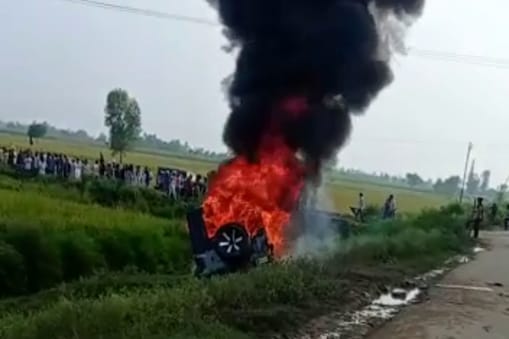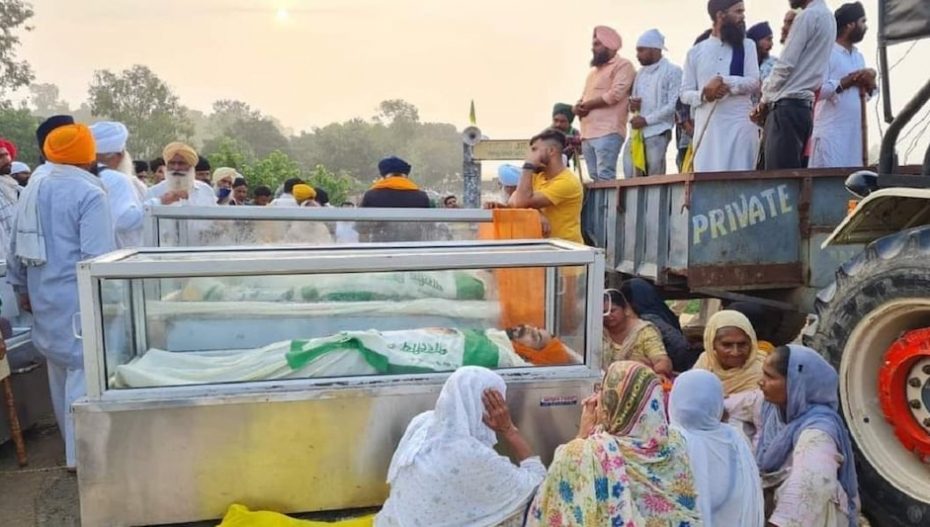It was a tragedy waiting to happen. The violence and killings in Uttar Pradesh’s Lakhimpur Kheri did not occur by serendipity. Like in west UP, the sugarcane growers elsewhere sat in protest over the non-payment of long pending dues for their produce from the private mills as well as the state cooperatives. The irony was when things boiled over, the epicentre of the cataclysm was not the western region which caught popular attention and interest but Avadh in central UP.
The west is home to the collateral political movements emanating from the agitations. These were led by Rakesh Tikait, the spokesperson of the Bharatiya Kisan Union (BKU), and Jayant Chaudhary, president of the Rashtriya Lok Dal (RLD), tipped to become an important player in the upcoming state elections in alliance with the Samajwadi Party (SP).
A part of Lucknow division, Lakhimpur Kheri is known as UP’s sugar bowl, housing three of Asia’s largest mills: Bajaj Hindusthan Sugar at Gola Gokarannath, Bajaj Hindusthan Sugar, Palia Kalan and Balrampur Chini Mills, Kumbhi. Although Lakhimpur Kheri has embraced other commercially viable produce such as menthol mint and oil seeds, sugarcane remains the backbone of its economy. One of the less volatile parts of UP, Lakhimpur Kheri’s phlegmatic disposition was shattered on Sunday when Ashish Mishra, the son of Ajay Mishra Teni, junior Union home minister under Amit Shah, was reported by eye-witnesses as ramming his vehicle that was part of a convoy into the protesters.

Four farmers were killed. In the ensuing pandemonium, four BJP workers lost their lives. An accurate count of the casualties is yet unavailable. In a video recording of a speech he delivered in the district some days ago, Teni was heard warning the protesters — whom he described as “miscreants” — to back off or face dire consequences. Read in tandem with Haryana chief minister Manohar Lal Khattar’s “tit-for-tat” call against his state’s agitating farmers, it is apparent that far from striving for a resolution to the long-drawn movement, the BJP has taken a hard line against those dissenting against the Centre’s farm laws.
In UP, the protests are as much against the farm “reforms” as the non-payment of sugarcane dues by the mills. The state’s cane commissioner, Sanjay R Bhoosareddy, stated recently that “at present the pending dues are close to Rs 5500 crore. In percentage terms, we have already paid 79 per cent of the dues, pan UP, which is a history in itself.” What does the data show? In Lakhimpur Kheri itself, a district official said the outstanding amount owed by the mills was Rs 999 crore, which is larger than the sums posted by other cane growing districts. Muzaffarnagar owes Rs 428 crore, Bijnor Rs 532, Shamli Rs 600 crore and Saharanpur, Rs 482 crore. Per the rules, farmers have to be paid within 14 days of supplying their sugarcane. In Lakhimpur Kheri, a little over 500,000 farmers supply their crops to the mills.
Recently, the Yogi Adityanath government hiked the state advisory price (SAP) of sugarcane by Rs 25 per quintal. It was the first raise reported by the state government in over four years, despite persistent demands by the farmers. A widespread complaint was that the increase was “paltry” and meant little because the rise in the cost of diesel, fertilisers, and power tariffs “nullified” the expected benefits. Former chief ministers had given larger hikes: Akhilesh Yadav brought the SAP to Rs 65 per quintal and Mayawati to Rs 115 per quintal.
While it’s early to assess the impact that the Lakhimpur Kheri occurrence would have over UP in the elections, the state government’s reaction was telling. When the Opposition decided to converge on the hotspot, it was stopped. Its leaders who included the big leaguers like Akhilesh Yadav and Priyanka Gandhi Vadra were arrested. Jayant Chaudhary gave a slip to the cops. His partymen claimed he managed to reach the site of violence. The aircraft carrying Bhupesh Baghel, the Chhattisgarh chief minister, to Lakhimpur Kheri was not allowed to land.
Only Rakesh Tikait was allowed inside presumably as a “non-political” representative of the peasantry. But the sub-text for making Tikait an exception was apparent: he was used to broker an agreement with the district administration to quell the tension. So far, the government consented to hand out Rs 45 lakh to the families of the deceased and Rs 10 lakh to those injured. An FIR has been lodged against Ashish Mishra among others. The BJP’s spin doctors have interpreted Tikait’s presence and role as a “triumph” for the ruling party, which they claimed, has spirited away the BKU leader from the Opposition. While Tikait is a maverick and demonstrably undependable as his history shows, having taken the agitation so far, a hint of his willingness to be co opted by the BJP can only be at his peril, because the establishment-farmer battle lines are now deeply etched.
Tikait is insisting that Teni must resign and his son must be arrested. A demand the BJP can’t easily accede to because Teni, a Brahmin, was inducted in the Union ministerial council in the last expansion precisely because the BJP felt it has to placate the Brahmins.














Very well Analysis. Yogi has turned into a maniac to win election. He wants to gag every voice which is against him.
While appreciating Radhika Ramaseshan’s well-documented analysis of the Lakhimpur Kheri incident of October 3, I cannot agree with her observation that the area had been “…one of the less volatile parts of UP..” and that it has a “phlegmatic disposition.” May I remind her that the peasants of Lakhimpur Kheri rose in revolt against oppressive landlords in 1968-69, raising the same demands which are being echoed today by their descendants ? They mobilized themselves under the auspices of an organization called the All-India Co-ordination Committee of Communist revolutionaries. They succeeded in re-occupying their lands which were earlier seized by these landlords. They continued to cultivate them till mid-1969. But then the UP government sent the Provincial Armed Constabulary (PAC) forces which raided the villages of these peasants, arrested their leaders and managed to crush the rebellion. These facts about the 1968-69 Lakhimpur Kheri peasants movement are well-documented in contemporary reports. I am willing to share those reports with Radhika Ramaseshan.
Sumanta Banerjee